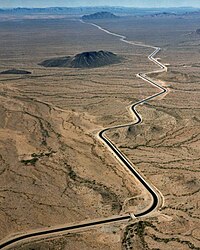
Photo from wikipedia
Abstract Irrigated agriculture is the dominant user of world’s fresh water which feeds the world’s growing population. Conflicts between stakeholders; incompatibility of economic, social, and environmental development; and uncertainties in… Click to show full abstract
Abstract Irrigated agriculture is the dominant user of world’s fresh water which feeds the world’s growing population. Conflicts between stakeholders; incompatibility of economic, social, and environmental development; and uncertainties in water supply and demand restrict the sustainable development of irrigated agriculture. This study developed a multi-scale multi-objective programming model for simultaneous optimal allocation of irrigation water and cropland to balance conflicts between farmers’ income and sustainable development of irrigation districts (reflected in economic, social, and environmental aspects). Consideration of the joint uncertainties of water supply and demand helps provide practical and indicative schemes for agricultural water and land allocation. The developed model was applied to a real case study in an irrigation district in northeast China. Farmers’ income, net economic benefit, resources allocation equity, and global warming potential were coordinated by optimally allocating limited water and cropland resources to different crops in different subareas under different combinational scenarios of water supply and demand. The performance of the model was evaluated, based on the concept of “adaptability” which can help realize the degree of ability of the irrigated agricultural system to adapt to changing environment. The developed model can help plan irrigation water and cropland resources in a sustainable way, and can be a reference for similar irrigation systems worldwide.
Journal Title: Agricultural Water Management
Year Published: 2021
Link to full text (if available)
Share on Social Media: Sign Up to like & get
recommendations!